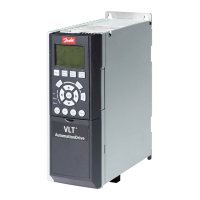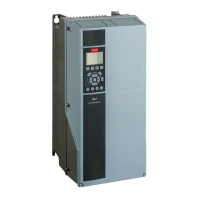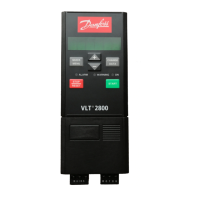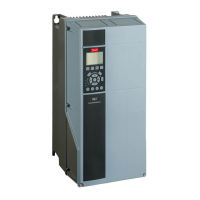guide value position for the beginning of the time-related
movement and so that the further guide value-related
movement can be resumed at the end of the EventSeg-
mentContainer. For that, the EventSegmentContainer must
be long enough, so that even at the highest speed of the
guide value, the time-related movement of the EventSeg-
mentContainer can still be processed completely.
Otherwise, the time-related movement is aborted at the
end of the EventSegmentContainer, leading to possible
jumps in velocity and position. The time-related movement
must start and end in standstill (the 1
st
EventSegment must
start in standstill and the last EventSegment must end in
standstill). The guide value-related movement that is
before the EventSegmentContainer must end in standstill.
The guide value-related movement after the EventSegment-
Container must start in standstill. If 1 of the conditions is
not fullled, a jump in velocity occurs.
Illustration 2.93 Event Segment Container
There is no special list of actions or exit conditions inside
the EventSegmentContainer element. All actions dened in
the CAM prole can be used for time-related nodes and
segments as well.
Attribute Mandatory/
optional
(+default
value)
Value range/
allowed values
Description
segID Same as in Table 2.17.
precNode Same as in Table 2.17. This needs to be a
GuideNode.
succNode Same as in Table 2.17. This needs to be a
GuideNode.
startAction Same as in Table 2.17.
endAction Same as in Table 2.17.
startingE-
ventNode
M An existing
nodeID of an
EventNode.
ID of the starting
EventNode at the
beginning of this
segment. If a
non-existing node
ID is used, an
error is issued
during parsing.
Table 2.25 Attributes for EventSegmentContainer
Additionally, an EventSegmentContainer has subelements to
describe its embedded time-related movement. There is a
(mandatory) list of EventNodes and a (mandatory) list of
EventSegments.
The beginning of the rst time-related segment and the
end of the last time-related segment must have velocity 0.
EventSegments
EventSegments are all segment types that are dened
based on time. EventSegments must be embedded into an
EventSegmentContainer.
EventSegments may only have EventNodes as preceding and
succeeding nodes. There are some attributes that are
common to all EventSegments. Those attributes can be
found in Table 2.26.
GuideSegments always run from one guide value position
to the next. EventSegments are more exible. It is possible
to dene additional supervising parameters that serve as
exit conditions. If such an exit condition appears, the axis
proceeds with the next segment.
Attribute Mandatory/
optional
(+default
value)
Value
range/
allowed
values
Description
segID M Integral
number; 0–
50000
Integral number to
uniquely identify this
segment. The segID must
be unique across all
Guide- and
EventSegments. The same
segID cannot be used
twice.
precNode M An existing
nodeID of
an
EventNode.
ID of the EventNode at
the beginning of this
segment. If a non-existing
node ID is used, an error
is issued during parsing.
succNode M An existing
nodeID of
an
EventNode.
ID of the EventNode at
the end of this segment.
If a non-existing node ID
is used, an error is issued
during parsing.
Servo Drive Operation Programming Guide
MG36D102 Danfoss A/S © 01/2017 All rights reserved. 61
2 2
